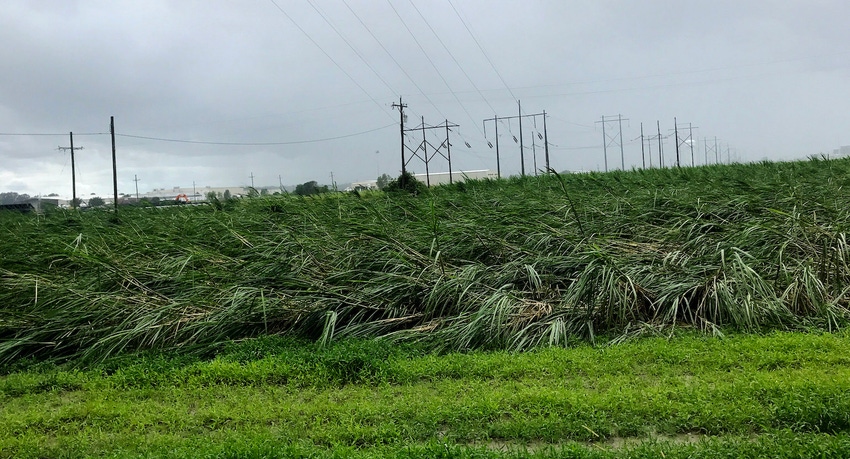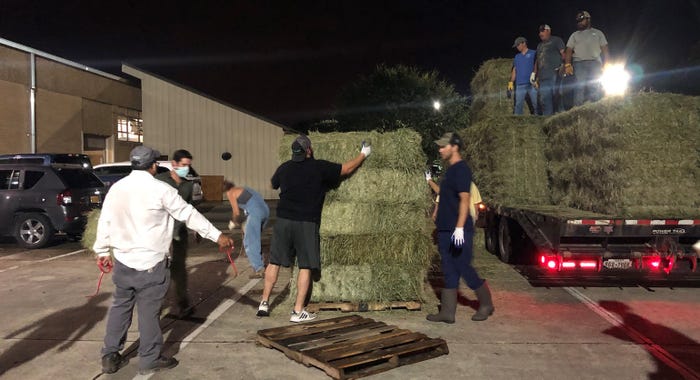September 14, 2021

While many growers in the Mississippi Delta escaped the brunt of Hurricane Ida’s wrath, the storm wreaked havoc on agricultural infrastructure near the mouth of the Mississippi River. And experts say the effects could be felt for some time.
“Moving forward, the million-dollar question is how quickly can repairs be completed to the damaged export facilities and shipping channel itself, said Mike Steenhoek, executive director of the Soy Transportation Coalition.
Extensive and persistent power outages slowed damage assessments, and at our publication deadline, experts were still unsure of the full extent of structural damage and crop loss. Portions of the Mississippi River remained closed for days due to power lines in the water, effectively cutting off river traffic. Two Cargill grain elevators in Louisiana suffered extensive damage from the storm, further adding to the logistical nightmare.
“The damage to the Cargill grain elevator in Reserve, Louisiana is significant, both due to the scale of the damage and the importance of this location to U.S. crop exports,” said Steenhoek. “This elevator handles a considerable portion of America’s grain exports, and it’s critical they are back up and running before the peak export time period.”
The U.S. Department of Agriculture reports that for the week ending August 16th (two days before the Coast Guard shut down the river due to Hurricane Ida) more than 10 million bushels of soybeans and more than 15 million bushels of corn were exported via the Mississippi Gulf region. Steenhoek said in mid-October to mid-November it is common for 40 – 50 million bushels of soybeans to be exported from the Gulf region.
“If the export facilities in the region are not back up and running at normal capacity by that time, our throughput will diminish, and we will essentially be attaching a garden hose to a fire hydrant,” Steenhoek continued. “Production is expected to be strong. International demand remains robust. However, if we do not have an infrastructure that can accommodate the journey between supply and demand, farmer profitability will be impacted.”
Damage to Louisiana ag
“If you draw a line from Terrebonne Parish north to the Felicianas, everything east will see some damage,” said Kurt Guidry, LSU AgCenter region director and agricultural economist. “We are getting reports of significant damage to fencing, buildings and farm structures.
Guidry suspected the infrastructure loss caused by Ida would be similar to what the southwestern portion of the state experienced with Hurricane Laura in 2020.
LSU AgCenter experts say timber, sugarcane, livestock, soybeans, fruit and vegetable crops, and the horticulture industry also experienced losses in their state.
Sugarcane is grown throughout the impacted area. Louisiana has approximately 500,000 acres of sugarcane, up to 25% was likely affected by Ida, said AgCenter sugarcane specialist Kenneth Gravois.
The sugarcane crop in the southwestern part of the state was spared, he said, but damage could vary in the southeast.
“Lodging of sugarcane occurred in many places, and that will slow planting,” he said.
In areas where Ida’s winds flattened the crop, harvesting will be difficult and sugar recovery will be lowered.
Renee Castro, an AgCenter area sugarcane agent who covers much of the affected area, said the cane was flat in Lafourche Parish.
Looking at possible timber damage, Guidry estimated that the region represents about 5% to as high as 22% of total production in Louisiana.
Guidry said there are about 172,000 head of cattle in southeast Louisiana, and agencies are working to get them watered and fed.
Dr. Christine Navarre, AgCenter extension veterinarian, said a multiagency team consisting of the AgCenter, Louisiana Farm Bureau Federation, Louisiana Department of Agriculture and Forestry, LSU School of Veterinary Medicine, Louisiana Tech University, the Louisiana Cattlemen’s Association and other livestock groups were working to get needed resources to impacted animals.
“In Ida’s aftermath, 1,200 square bales of hay were delivered to the Louis Mouch Jr. Multi-Purpose Facility in Port Allen and to the LSU School of Veterinary Medicine,” Navarre said. “Many volunteers showed up to help unload.”
Most of the hay was distributed, and she said other supplies are being collected and distribution locations are being identified farther east and south.

Navarre said anyone requesting or donating hay, feed, pasture or trucking should go to https://lafarmbureau.org/hayclearinghouse. For requests for other assistance, contact your local LSU AgCenter agents, Farm Bureau agents or local office of emergency preparedness.
Bright side?
Steenhoek said of all the discouraging reports from the region, he was encouraged to see the levee and water pumping infrastructure at New Orleans withstand major damage from the hurricane.
“Much of this infrastructure was completed after Hurricane Katrine in 2005. As our nation continues to debate an infrastructure investment strategy, may we recognize that the best time to invest in resiliency and redundancy is before the catastrophe, rather than after it. Hurricane Ida has offered a compelling reminder of this truth.”
About the Author(s)
You May Also Like




